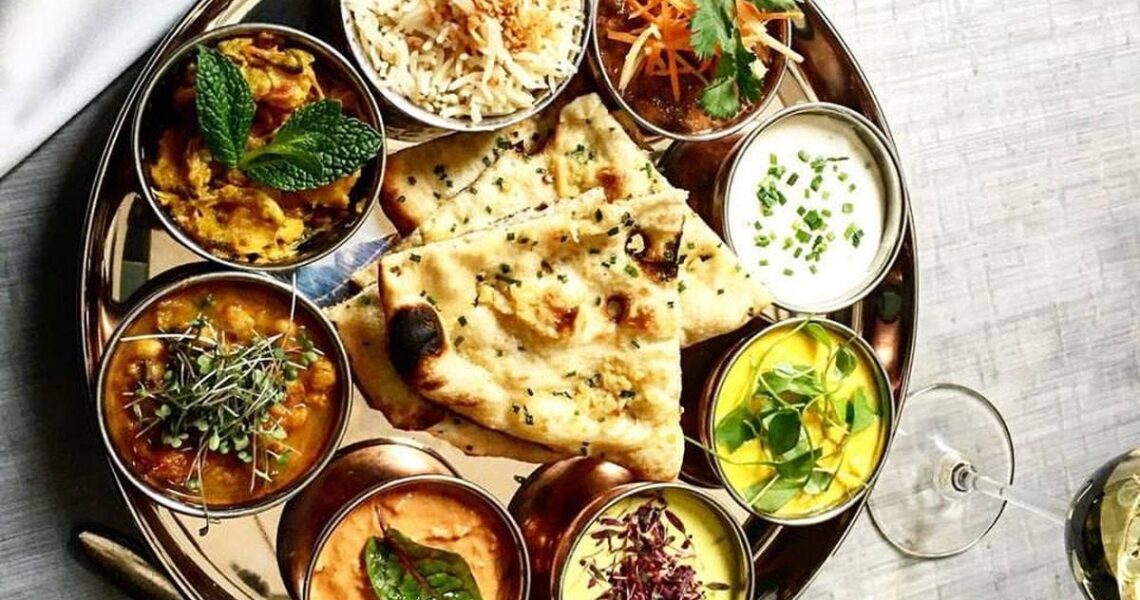You’ve almost certainly eaten “Indian” food if you’ve ever dined in an Indian restaurant in the United States. This type of enterprise may be found all throughout the United States and around the globe. Lunch is typically served as a buffet, with items like chicken tikka masala, naan bread, and samosas available. Most Americans, on the other hand, regard “Indian food” as a culinary cuisine influenced by Indian cuisine that originated in the United Kingdom. This is referred to as “tandoori” cooking. In terms of cultural practices, Indian food differs significantly from American cuisine. It boasts a diverse range of powerful flavors and spices, most new to most Americans.
No matter whether your search for “Indian food near me” returned any results, Tikka Shack is the right destination to come for real Indian cuisine. Your search results, on the other hand, are still unavailable. Genuine Indian food and a lively atmosphere combine to provide an outstanding dining experience. Do you ever have an intense yearning for a tasty restaurant lunch? Authentic Indian food may be ordered from their website and eaten at home, alone, or with your loved ones.
Keep reading so that you can learn the differences between traditional and Americanized Indian cuisine, as well as why Indian food, in whatever form it takes, is an ideal choice for every occasion.
A Variety of Spices Are Employed
Cardamom, turmeric, cumin, nutmeg, coriander, and chili powder are among the spices and herbs used in traditional Indian cuisine. Chili powder is yet another example. To emit a wide range of flavors and nuances into food, each component of Indian cuisine employs a distinct combination (known as masalas) of these spices. This is done to cater to a wide variety of preferences. The rich flavor and aroma of Indian food can be traced to the combination of ingredients. As a result, the tastes of the meals become more subtle.
Americanized Indian food, on the other hand, employs fewer spices and emphasizes items, such as butter or heavy cream, that are unusual in traditional Indian cuisine. This is due to the influence of Western gastronomy on Indian cuisine. As a result, the flavor is more subdued and appealing to Western palates. When fresh spices are utilized instead of ready-made curry powders, the whole flavor profile of Americanized Indian food could shift.
Genuine and Westernized Indian food provoke quite different emotional responses. Traditional Indian food has been transformed to provide a milder flavor that appeals to a variety of tastes. By contrast, traditional Indian cuisine is known for its nuanced taste interplay. The flavor of authentic Indian cuisine is regarded to be more complex and delicate. As a result, knowing the distinctions between these two cooking processes is critical for precisely reproducing the flavors of Indian cuisine.
Making Use of Cooking Oil
Traditional Indian cuisine is lighter and more nutritious than Westernized Indian cuisine. Western items and cooking methods have influenced Indian cuisine. This is due to the fact that traditional meals utilize less oil than Westernized food. The extensive use of spices in standard Indian cuisine results in a more diverse flavor profile. This is one of the dish’s unique characteristics.
This directly determines the quantity of heat at which the meal is provided when compared to its Westernized version. In addition, most traditional recipes require the meal to be cooked for a lengthy amount of time at a moderate temperature. This improves the flavor of the dish’s elements.
Authentic Indian cuisine is far more nutritious and high in antioxidants than a Westernized diet, each of which is good for human health. This dish includes less fat and calories than dishes made in the Western style since it contains no extra fats or oils. Spices have been shown to provide various health benefits, including improved immune system function and digestive aid. Spices assist digestion, which is one of its many health benefits. While modern Indian cuisine has a position in the global gastronomic arena, classic Indian food is undeniably superior when it comes to nutritional value and flavor.
Nutritious Ingredients
Rice, beans, lentils, and vegetables may be prepared in a number of ways to provide delicious meals without the need for processed foods or sauces. These recipes do not require any additional flavors or condiments. Traditional Indian food usually employs whole, unprocessed ingredients. Furthermore, traditional Indian food has a wider range of culinary options than Westernized versions since it commonly incorporates vegetarian and meat-centered dishes.
These options, on the other hand, are prevalent in many Westernized forms. This is a traditional form, as opposed to several Westernized versions. The availability of both vegetarian and meat-based meals is one of the most distinguishing elements of traditional Indian cuisine. The term “traditional Indian cuisine” can refer to a variety of dishes, the majority of which include meat as a main component. Because traditional Indian cuisine emerged on the subcontinent and is still widely available today, this is the case.
Heat Levels
Because many recipes use a varied array of spices to generate various flavor characteristics, authentic Indian food is usually hotter than its Westernized equivalents. This is because chili peppers are utilized in a variety of dishes. This is due to the fact that Westernized versions of Indian cuisine often utilize fewer spices. This is due to the fact that many of these recipes ask for the use of a variety of spices.
Westernized versions, on the other hand, frequently feature fewer spices and a lower overall spice intensity than the original form. They are more costly since they were developed to appeal to a broader range of clientele, including those with less sensitive taste receptors.
As a result, they acquired this characteristic. As a result, authentic Indian cuisine is more flavorful and spicy than Westernized equivalents. This also applies to the food of India’s many regions. It’s crucial to understand that most Indian dishes differ by region due to regional cooking practices. As a result, even in traditional Indian cuisine, a diverse variety of commodities and tastes are almost likely used. This is because of India’s varied landscape.
Summary
Although there are differences between authentic Indian food and Westernized Indian meals, they all have a single feature in common: they are all tasty. Tikka Shack is the place to go if you are interested in trying the best Indian food in town since they serve the best Indian food in your area. This is true regardless of whether you prefer the softer flavors of the West or the spicy spices of India since both are approachable and delicate recipes created outside of the box. You will be able to visit one of their eateries in several states. Click here, order from their menu, then stuff your plate and face!







